#Launch Complex 39A (LC-39)
Explore tagged Tumblr posts
Text



























Robert Goddard Day
Robert Goddard Day is celebrated on March 16 every year. It is a day to celebrate the great mind of Dr. Robert Hutchings Goddard and his achievements. He is known as the father of American rocketry and the space age. Dr. Goddard discovered the technology and created the first liquid-fueled rocket in 1926. The success of his test is considered a milestone in the space age. His achievement is of the same importance as the invention of the Wright brothers in testing the first flight. He conducted the test from Auburn, Massachusetts, earning him the title “the father of modern rocket propulsion.”
History of Robert Goddard Day
Flight is a dream for every human being. Birds have always made us jealous with their ability to soar through the freedom of the vast white expanse of the sky, watching the flightless beings on the ground. On December 17, 1903, the Wright brothers took to the sky, giving wings to the dreams of humans to touch the sky. What felt like an impossible event a few decades ago is now easy to achieve. With the sky conquered, the next dream is to reach the infinite distances of space. The problem with the airplane is that it depends on the air and air pressure. Space does not have air, and, thus flight is not possible.
Dr. Robert Hutchings Goddard was born on October 5, 1882, in Worcester, Massachusetts. He had a way to work in a vacuum. He predicted that a rocket would be able to work in the emptiness of space as it does not need air to push. He was a physics teacher at Clark University in Worcester. He had already started working on his idea of space travel in 1915. When Goddard claimed that the rockets could be used to transport payloads to the moon, he was ridiculed, and his theory was considered folly. But time taught them they were wrong.
Goddard did not live long enough to see his childhood dream of space travel realized. But his work laid the foundation for propelling modern space dreams.
Robert Goddard Day timeline
1909
The Gunpowder Rockets
As a student at Worcester Polytechnic Institute in Massachusetts, Goddard experiments on a gunpowder-powered rocket.
1923
The Director of Physical Laboratory
Goddard is appointed the director of the Physical Laboratory.
1926
The First Rocket Test
Goddard tests the first liquid-fueled rocket.
1959
The Goddard Space Flight Center
Nasa establishes Goddard Space Flight Center in Maryland.
Robert Goddard Day FAQs
Why was the liquid-fueled rocket important?
Liquid rockets can provide more thrust and allow engineers to specify the range of the rocket.
Why is it important to have rockets?
They help deliver satellites to space and enable global communication, weather forecasts, and other technologies like GPS, which are an integral part of our lives.
How did rockets change the world?
Rockets changed warfare. Due to intercontinental ballistic missiles and nuclear warheads, wars are no longer possible between major powers due to mutually assured destruction. Rockets also opened a frontier for space exploration. It helped revolutionize the technologies that we are so dependent on.
How to Observe Robert Goddard Day
Carry out a science experiment: This day is best spent doing a science experiment. You can start small with an experiment like collecting gas from a soda bottle. Record the experiment and post it on social media.
Watch a scientific documentary: Another easy way to spend the day is by watching scientific documentaries. Fluidity, air pressure, gravity, space, chemistry, etc. You choose the topic and start watching.
Create a mini rocket: You can purchase small rockets that can be assembled and taken off. Don’t worry, if they are not as advanced as the original rockets. We do not have to be rocket scientists to work on them.
5 Interesting Facts About Rockets
Arrows and rockets: The first rockets were used to propel arrows with greater speed and impact.
The first rockets: The Song dynasty of China found ways to weaponize gunpowder-powered rockets during the tenth century.
The ‘Father of Rockets’: It took Goddard 17 years to develop the first liquid-fueled rockets.
The iron-cased rockets: Tipu Sultan of India used iron-cased rockets for military use.
The first space rocket: In 1957, Russia created Sputnik, the first rocket that reached space.
Why Robert Goddard Day is Important
Space is infinite: Space is infinite. The contributions of Dr. Goddard helped us reach the infinity of space.
Sky is no longer the limit: Something beyond the sky just opened up thanks to the rockets. Now we can dream even bigger into the vast dark space.
It promotes innovations: Innovations can change society. With the advancement in technology, advancement in human civilization follows. The rocket's innovation now allows us to launch satellites and progress into the modern world.
Source
#Launch Complex 39B (LC-39)#Goddard Day#Dr. Robert Hutchings Goddard#first liquid-fuel rocket#16 March 1926#anniversary#US history#travel#USA#Kennedy Space Center Visitor Complex#Florida#summer 2010#2009#vacation#original photography#engineering#Launch Complex 39A (LC-39)#Saturn V#Rocket Garden#tourist attraction#landmark#NASA#National Aeronautics and Space Administration#Robert Goddard Day#RobertGoddardDay
8 notes
·
View notes
Link
SpaceX is targeting Sunday, September 3 at 7:25 p.m. ET (23:25 UTC) for a Falcon 9 launch of 21 Starlink satellites to low-Earth orbit from Launch Complex 39A (LC-39A) at NASA’s Kennedy Space Center in Florida. If needed, five additional opportunities are available starting at 8:15 p.m. ET (00:15 UTC on September 4) until 11:05 p.m. ET (03:05 UTC). Six backup opportunities are also currently available on Monday, September 4 starting at 6:59 p.m. ET (22:59 UTC) until 10:39 p.m. ET (02:39 UTC on September 5). This is the 10th flight for the first stage booster supporting this mission, which previously launched SES-22, ispace’s HAKUTO-R Mission 1, Hispasat Amazonas Nexus mission, CRS-27, and five Starlink missions. Following stage separation, the first stage will land on the Just Read the Instructions droneship, which will be stationed in the Atlantic Ocean. A live webcast of this mission will begin about five minutes prior to liftoff.
0 notes
Text
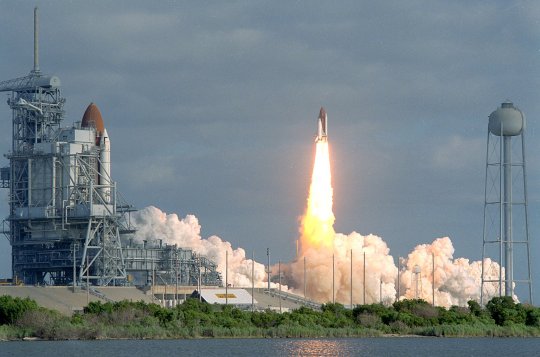
"STS-31 Discovery (OV-103), lifts off from Kennedy Space Center (KSC) Launch Complex (LC) 39 Pad B. Discovery, carrying a five-member crew and the Hubble Space Telescope, lifted off at 8:34 a.m. EDT, April 24. STS-31 crew members are: Commander Loren Shriver; Pilot Charles Bolden; and Mission Specialists Steven Hawley, Bruce McCandless II, and Kathryn Sullivan.
In the foreground, STS-35 Columbia (OV-102), is visible on launch pad 39A. Columbia, with its Astro-1 observatory, was scheduled for launch in May.
This event marked the first time since January 1986 that there was an orbiter on each pad. LC 39 pads are separated by 1.6 miles."
Date: April 24, 1990
NASA ID: SPD-GRIN-GPN-2000-00 0684, S90-44867, KSC-90PC-0610
#STS-31#STS-35#Space Shuttle#Space Shuttle Columbia#Columbia#OV-102#Space Shuttle Discovery#Discovery#OV-103#Orbiter#NASA#Space Shuttle Program#Launch#LC-39B#Kennedy Space Center#KSC#Florida#LC-39A#April#1990#my post
88 notes
·
View notes
Photo
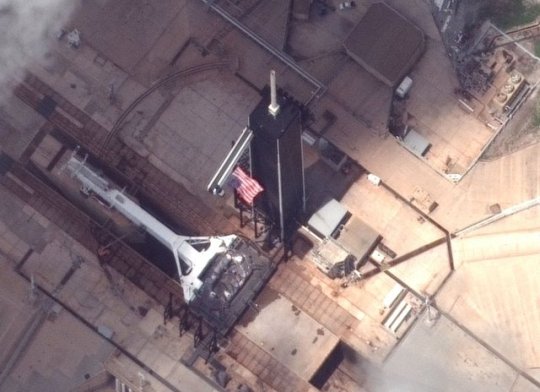

Apollo-era Launch Complex 39 captured from orbit on eve of Apollo 11 golden anniversary (July 10, 2019).
Maxar Technologies' WorldView-3 satellite captured these views of Kennedy Space Center’s Launch Complex 39 Monday, July 8. Both Apollo-era launch pads are now home to different launch vehicles. SpaceX launches their Falcon 9 and Falcon Heavy rockets from LC-39A as well as their Crew Dragon spacecraft. The company hung a giant American flag from their Crew Access Arm in commemoration of the upcoming 50th anniversary of the Apollo 11 mission, which departed for the moon from that very pad. The transporter/erector strongback that the rockets are assembled and transported to the pad on can be seen in the horizontal position adjacent to the service tower. NASA will utilize LC-39B for their Space Launch System, which WorldView-3 captured with the SLS Mobile Launch atop it. The ML was moved from the Vehicle Assembly Building to the pad last week for a final series of validation checks before hosting the first SLS flight in early 2021.
WorldView-3 was roughly 380 miles above the earth when it captured these images. P/c: Maxar Technologies.
60 notes
·
View notes
Photo

Director Paul Hildebrandt of the DOC NYC #film pick Fight For Space, has launched a new Kickstarter project in need of production funds to complete @firstmoonmovie , a documentary film that tells the amazing story of the Project Apollo 8 mission and the three men that crewed it. Through restored archival films from NASA, The National Archives, and their own personal collections, this film takes you through time from the upbringing of each crew member and onward to present day. https://www.kickstarter.com/projects/420606009/first-to-the-moon-the-journey-of-apollo-8 Featuring Commander Frank Frederick Borman, Lunar Module Pilot Bill Anders, and Command Module Pilot Jim Lovell, this film will show you how the #Apollo8 mission happened from launch to landing in a visually and musically exciting film told through animation and archival film and photo. Coupled with an orchestral score from our composer and live musicians, #FirstToTheMoon will be a truly cinematic experience. As tomorrow's #FalconHeavy launch approaches, we reflect upon the past 50 years of spaceflight, and most notably -- with respect to LC-39A or Kennedy Space Center Launch Complex 39, the stage which commenced our human spaceflight program @nasa -- the astronauts, engineers, and scientists whom paved the way for humanity in space.
2 notes
·
View notes
Photo

SpaceX is targeting Wednesday, July 8 at 11:59 a.m. EDT, 15:59 UTC, for launch of its tenth Starlink mission, which will include 57 Starlink satellites. 2 satellites from BlackSky, a Spaceflight customer and 1 Global Space Technologies cargo. Falcon 9 will lift off from Launch Complex 39A (LC-39A) at Kennedy Space Center in Florida. @nasakennedy @spacex @globalspacetech #nasa #falcon9 #spacex (at Kennedy Space Center Launch Complex 39) https://www.instagram.com/p/CCW02XwnNIB/?igshid=mhx3k3gzj4x4
0 notes
Text
NASA and SpaceX set historic first astronaut launch for May 27

NASA and SpaceX have set a specific date and time target for their historic first astronaut launch aboard a private spacecraft from U.S. soil, with a planned date of May 27 and a target liftoff time of 4:32 PM EDT (1:32 PM PDT) from Kennedy Space Center, at SpaceX’s Launch Complex 39A (LC-39). The mission had been previously announced too be tracking towards a mid- to late-May launch timeframe,…
View On WordPress
0 notes
Text
NASA and SpaceX set historic first astronaut launch for May 27
NASA and SpaceX have set a specific date and time target for their historic first astronaut launch aboard a private spacecraft from U.S. soil, with a planned date of May 27 and a target liftoff time of 4:32 PM EDT (1:32 PM PDT) from Kennedy Space Center, at SpaceX’s Launch Complex 39A (LC-39). The mission had been previously announced too be tracking towards a mid- to late-May launch timeframe, but now we know exactly when the agency and SpaceX hope to launch astronauts Bob Behnken and Doug Hurley for this inaugural trip to the International Space Station.
The launch is the first crewed mission in NASA’s Commercial Crew program, which seeks to return American launch capabilities to U.S. soil through private partnerships, with both SpaceX and Boeing taking part and developing their own separate launch vehicles and crew craft. SpaceX has taken all the steps necessary to get to this stage ahead of Boeing, and this flight, called Demo-2, while still technically part of the test program, will see NASA’s astronauts visit the space station for “an extended stay,” with a full duration yet to be determined.
This final test will validate each aspect of the Crew Dragon and Falcon 9 launch system, including the pad from which the rocket takes off, the operational facilities on the ground, orbital systems and astronauts procedures. Pending successful completion of all those elements, Crew Dragon should be set for full operational certification, after which time it can begin regularly scheduled service of reliving astronauts to and from the ISS.
For the mission, Crew Dragon will launch with Behnken and Hurley, then enter orbit and rendezvous with the ISS, which should occur around 24 hours after liftoff. The spacecraft is designed to dock fully autonomously with the station (and has done so on a previous occasion during an uncrewed demo mission) and then Behnken and Hurley will disembark and join as members of the ISS crew, performing research on the orbital science platform.
The Crew Dragon flying this mission is designed to stay on orbit for around 110 days, but its actual length of stay will be decided by how ready the commercial crew mission to follow is at the time of launch. That Crew Dragon, which is the fully operational version, is designed for stays of at least 210 days, and the crew complement of four astronauts, including three from NASA and one from Japan’s space agency, is already determined. If all goes well, it’ll happen sometime later this year.
Crew Dragon from Demo-2 will perform an automated undocking from the ISS with Behnken and Hurley on board when it is ready to leave, and then they’ll re-enter Earth’s atmosphere and have a controlled splashdown landing in the Atlantic Ocean, where a SpaceX ship will pick them up and bring them back to Florida.
Obviously, NASA and SpaceX are facing challenges along with everyone else with the global COVID-19 crisis ongoing, but the agency has taken extra precautions to ensure this mission continues, since NASA Administrator Jim Bridenstine notes that continued U.S. access to, and presence within the ISS is critical.
0 notes
Text
The Marvel of Space Flight! A Visit to the Kennedy Space Center
Amid the turmoil of the turbulent 1960's, one of the most exciting and positive events I fondly remember was watching the live early morning rocket launches from Cape Canaveral. Huddled around our livingroom, our family's eyes were glued to the black and white Philco television set, in breathtaking silence as the rocket boosters spewed copious clouds of white smoke that engulfed the launch pad, before the Saturn V rocket finally lifted off the pad and into space. Those early years of the space race were heady ones, filled with exuberance and a hope for a bright tomorrow. The future of the NASA (National Aeronautics and Space Administration) space program promised to free mankind from the confines of our troubled planet earth, once and for all.

A visit to Florida wouldn't be complete if it didn't include a visit to to Merritt Island and the home of the John F. Kennedy Space Center. This historical island, about six times the size of Manhattan, encompasses 140,000 acres, bordered by the Intra-Coastal Waterway on the west and the Atlantic Ocean on the east. It is home to NASA, where space technology integrates with the surrounding wildlife habitat.
Parking is free at the Kennedy Space Center Visitor Complex, and I chose the standard ticket (currently $38.00 for adults and $28.00 for children 3 - 11 years old) that included the bus tour that runs throughout the day.
I first checked out the Rocket Garden with examples of early Redstone rockets, propulsion systems, guidance systems and technology as new discoveries advanced NASA's scientists to develop tools and equipment to enable astronauts to probe further and for longer periods of time into the new frontier of space.
After that I boarded one of the sleek tour buses and watched a video monitor as the tour guide gave us instructions as to when to watch and when to look out the bus window. The retired gentleman at the wheel also pointed out interesting things to us as we traveled through the natural reserve. We passed by a lazy alligator languishing in a drainage ditch.
Once our bus neared the Vehicle Assembly Building (VAB), which is the second largest building in the world per volume, the driver pointed out the enormous specialty crawler that transports the space shuttle and rocket to the launch pad. At one mile per hour, it creeps along on a unique gravel road bed designed to bear the combined earth crunching weight of the crawler and orbiter.
"I wonder what's going on here," remarked the bus driver as we observed employees gathered in groups sitting along the roadway. "I've never seen this before," he remarked with a note of concern in his voice. "Something must have happened." We discovered later that there had been a small fire inside the VAB and everyone was evacuated.
Our first stop was in front of the LC-39 Observation Gantry. The second floor vantage point allowed us panoramic views of the two space shuttle pads 39A and 39B. They were still quite a distance away, for safety's sake, separated by indigenous forest. The gantry also offered a bird's eye view of the VAB and Crawlerway. Once on the main floor, I joined others for a historical video about the Kennedy Space Center.
I hopped on another bus that took me along with a group of young students to the Apollo/Saturn V Center. It was here that the 'wow factor' came into play. Seeing the awesomely huge Saturn V rocket, even measured by today's advanced technology, is still the most complex device made by man! It dwarfed anything man made that I had ever encountered. Simply amazing! This completely restored example was first shown to the public in 1995. A model of the Lunar Rover is also on display here.
The doors opened to the adjacent room and there before us was the actual Apollo 11 Control Center, with details like tee shirts and jackets draped over the chairs, from the various contractors and suppliers like Boeing, IBM, etc. right to the same white ceramic tiles on the floor. Everyone was in reverent silence as the soundtrack played synchronizing with a colored light display that lit the affected command center areas, realistically depicting the events that took place that July day in 1969 when that historic launch that propelled Apollo 11 to the moon. That world landmark event that would result in the first men to walk on the surface of the moon. It was the fulfillment of the daunting promise of President John Kennedy to land a man on the moon by the end of the decade. The vivid memory of that hot July day when Neil Armstrong stepped off the ladder of the lunar module onto the soft blanket of fine dust of the moon's surface is permanently etched in the memory banks of my mind.
0 notes
Text
The Marvel of Space Flight! A Visit to the Kennedy Space Center
Amid the turmoil of the turbulent 1960's, one of the most exciting and positive events I fondly remember was watching the live early morning rocket launches from Cape Canaveral. Huddled around our livingroom, our family's eyes were glued to the black and white Philco television set, in breathtaking silence as the rocket boosters spewed copious clouds of white smoke that engulfed the launch pad, before the Saturn V rocket finally lifted off the pad and into space. Those early years of the space race were heady ones, filled with exuberance and a hope for a bright tomorrow. The future of the NASA (National Aeronautics and Space Administration) space program promised to free mankind from the confines of our troubled planet earth, once and for all.

A visit to Florida wouldn't be complete if it didn't include a visit to to Merritt Island and the home of the John F. Kennedy Space Center. This historical island, about six times the size of Manhattan, encompasses 140,000 acres, bordered by the Intra-Coastal Waterway on the west and the Atlantic Ocean on the east. It is home to NASA, where space technology integrates with the surrounding wildlife habitat.
Parking is free at the Kennedy Space Center Visitor Complex, and I chose the standard ticket (currently $38.00 for adults and $28.00 for children 3 - 11 years old) that included the bus tour that runs throughout the day.
I first checked out the Rocket Garden with examples of early Redstone rockets, propulsion systems, guidance systems and technology as new discoveries advanced NASA's scientists to develop tools and equipment to enable astronauts to probe further and for longer periods of time into the new frontier of space.
After that I boarded one of the sleek tour buses and watched a video monitor as the tour guide gave us instructions as to when to watch and when to look out the bus window. The retired gentleman at the wheel also pointed out interesting things to us as we traveled through the natural reserve. We passed by a lazy alligator languishing in a drainage ditch.
Once our bus neared the Vehicle Assembly Building (VAB), which is the second largest building in the world per volume, the driver pointed out the enormous specialty crawler that transports the space shuttle and rocket to the launch pad. At one mile per hour, it creeps along on a unique gravel road bed designed to bear the combined earth crunching weight of the crawler and orbiter.
"I wonder what's going on here," remarked the bus driver as we observed employees gathered in groups sitting along the roadway. "I've never seen this before," he remarked with a note of concern in his voice. "Something must have happened." We discovered later that there had been a small fire inside the VAB and everyone was evacuated.
Our first stop was in front of the LC-39 Observation Gantry. The second floor vantage point allowed us panoramic views of the two space shuttle pads 39A and 39B. They were still quite a distance away, for safety's sake, separated by indigenous forest. The gantry also offered a bird's eye view of the VAB and Crawlerway. Once on the main floor, I joined others for a historical video about the Kennedy Space Center.
I hopped on another bus that took me along with a group of young students to the Apollo/Saturn V Center. It was here that the 'wow factor' came into play. Seeing the awesomely huge Saturn V rocket, even measured by today's advanced technology, is still the most complex device made by man! It dwarfed anything man made that I had ever encountered. Simply amazing! This completely restored example was first shown to the public in 1995. A model of the Lunar Rover is also on display here.
The doors opened to the adjacent room and there before us was the actual Apollo 11 Control Center, with details like tee shirts and jackets draped over the chairs, from the various contractors and suppliers like Boeing, IBM, etc. right to the same white ceramic tiles on the floor. Everyone was in reverent silence as the soundtrack played synchronizing with a colored light display that lit the affected command center areas, realistically depicting the events that took place that July day in 1969 when that historic launch that propelled Apollo 11 to the moon. That world landmark event that would result in the first men to walk on the surface of the moon. It was the fulfillment of the daunting promise of President John Kennedy to land a man on the moon by the end of the decade. The vivid memory of that hot July day when Neil Armstrong stepped off the ladder of the lunar module onto the soft blanket of fine dust of the moon's surface is permanently etched in the memory banks of my mind.
Snapping back to reality, our tour group shuffled our way to the theater. In the comfort
0 notes
Text
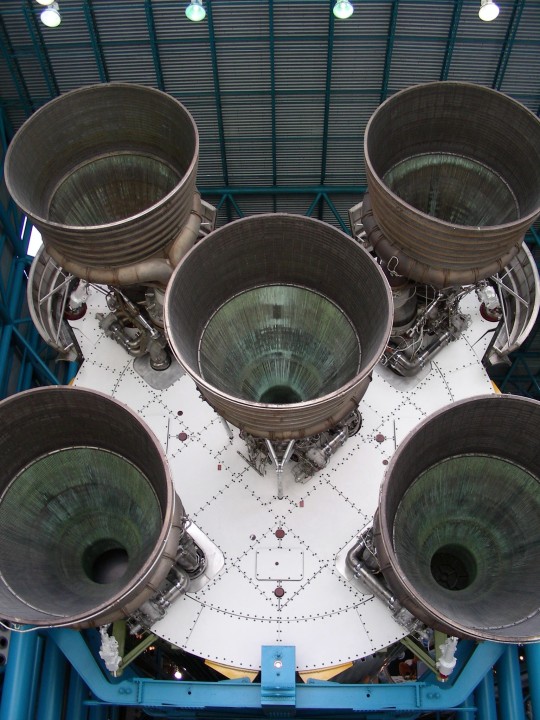

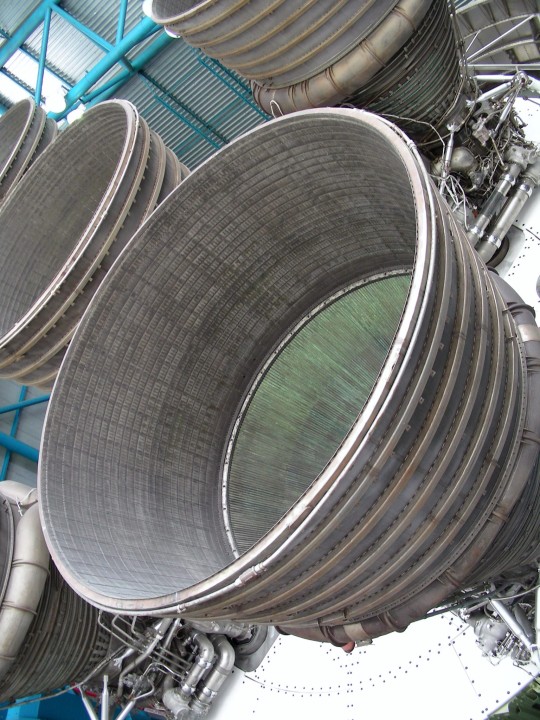
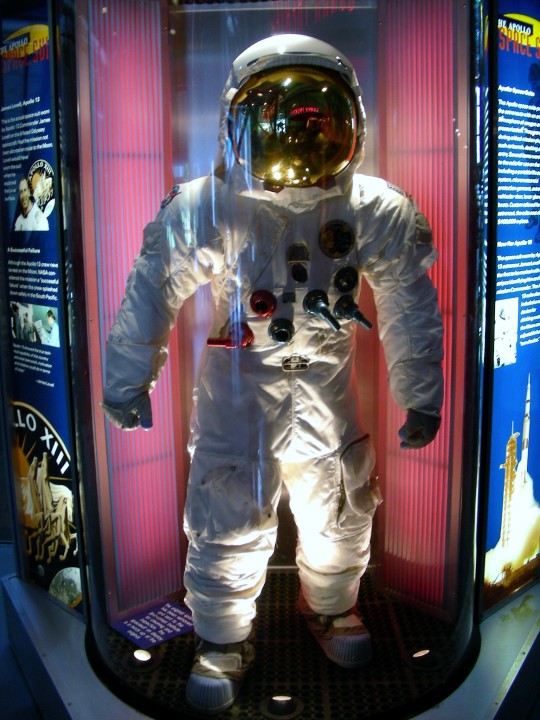
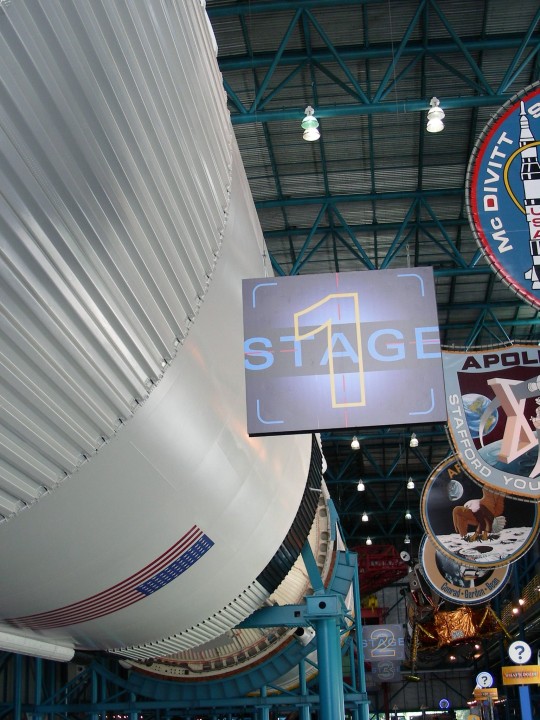
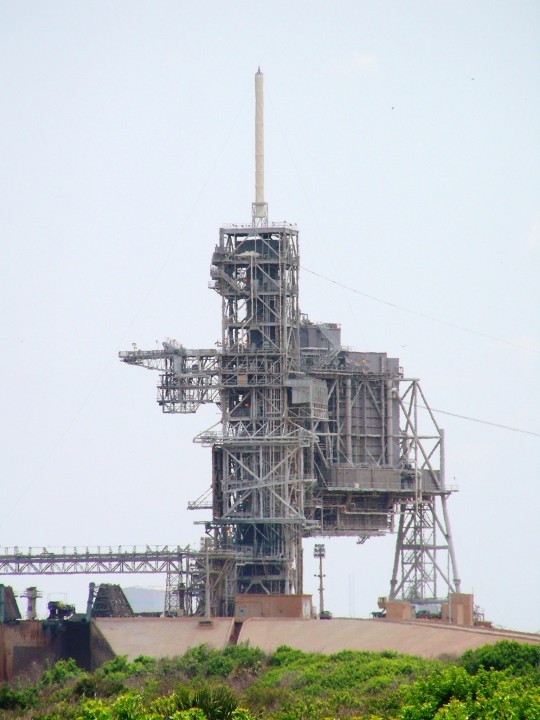
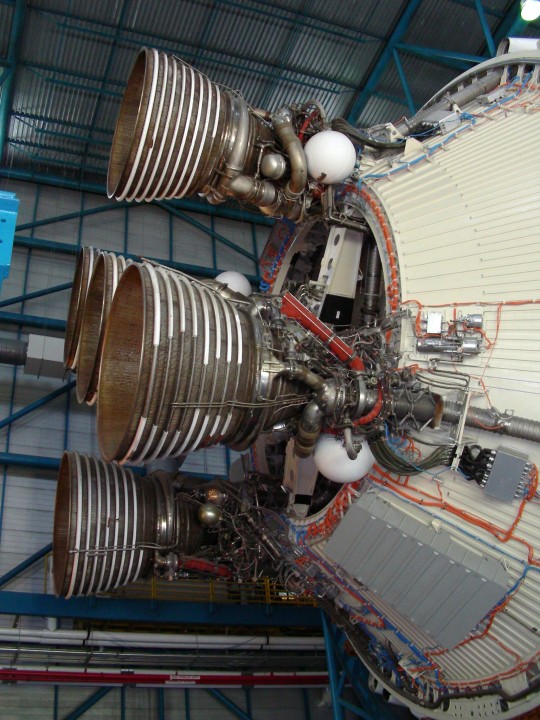


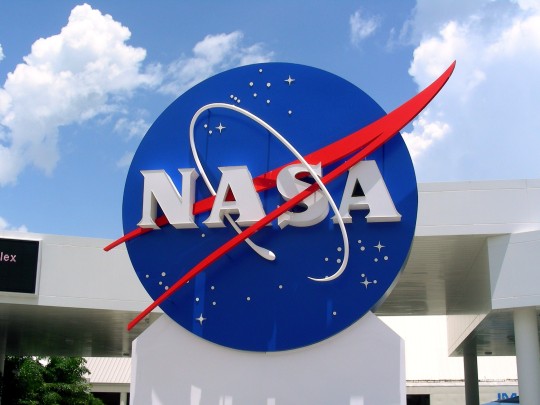
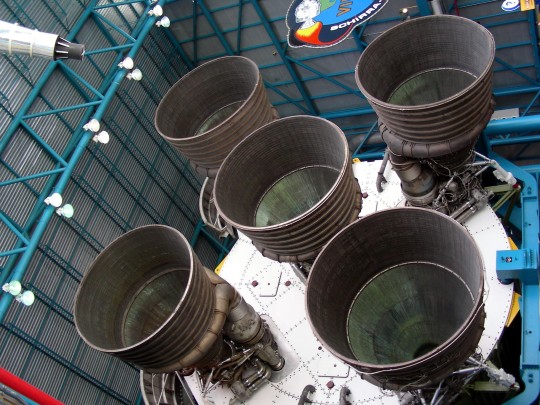



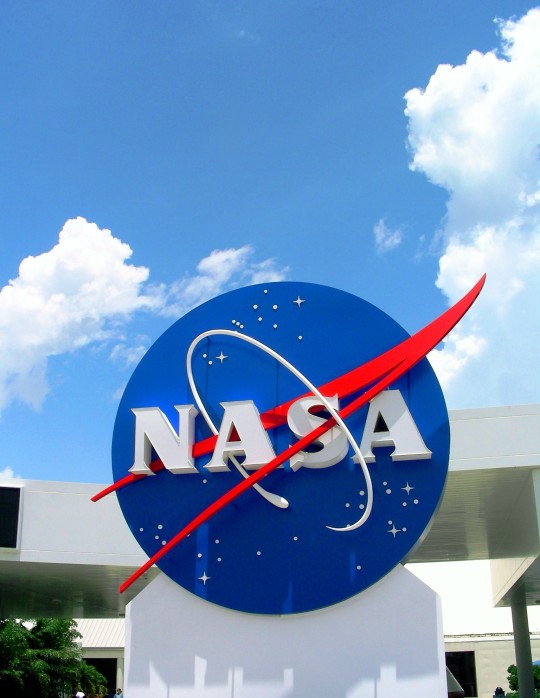
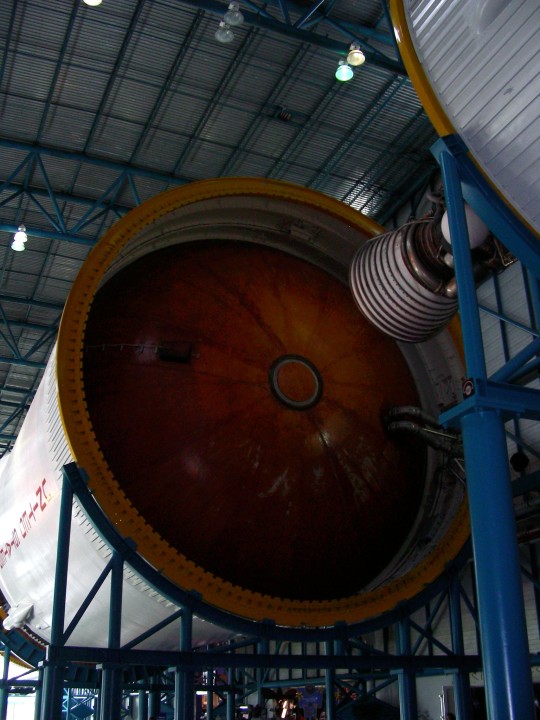


Apollo 13 was launched on April 11, 1970.
#Apollo 13#launched#11 April 1970#anniversary#US history#Florida#USA#Kennedy Space Center#John F. Kennedy Space Center#KSC#NASA#National Aeronautics and Space Administration#Launch Complex 39A (LC-39)#Kennedy Space Center Visitor Complex#Saturn V#engineering#logo#2009#original photography#summer 2010#travel#vacation#tourist attraction#indoors#outdoors#landmark#Jim Lovell's space suit
44 notes
·
View notes
Link
On Saturday, August 26 at 3:27 a.m. ET (07:27 UTC), Falcon 9 launched Dragon’s seventh operational human spaceflight mission (Crew-7) to the International Space Station from Launch Complex 39A (LC-39A) at NASA’s Kennedy Space Center in Florida. Following stage separation, Falcon 9’s first stage landed on Landing Zone 1 (LZ-1) at Cape Canaveral Space Force Station. Dragon will autonomously dock with the space station on Sunday, August 27 at approximately 8:39 a.m. ET (12:39 UTC). Follow Dragon and the crew’s flight below. During their time on the orbiting laboratory, the crew will conduct science and technology demonstrations to prepare for human exploration beyond low-Earth orbit and to benefit humanity on Earth, in addition to space station maintenance activities. The webcast will resume approximately two hours prior to docking.
0 notes
Text
The Marvel of Space Flight!
Once our bus neared the Vehicle Assembly Building (VAB), which is the second largest building in the world per volume, the driver pointed out the enormous specialty crawler that transports the space shuttle and rocket to the launch pad. At one mile per hour, it creeps along on a unique gravel road bed designed to bear the combined earth crunching weight of the crawler and orbiter.
"I wonder what's going on here," remarked the bus driver as we observed employees gathered in groups sitting along the roadway. "I've never seen this before," he remarked with a note of concern in his voice. "Something must have happened." We discovered later that there had been a small fire inside the VAB and everyone was evacuated.

Our first stop was in front of the LC-39 Observation Gantry. The second floor vantage point allowed us panoramic views of the two space shuttle pads 39A and 39B. They were still quite a distance away, for safety's sake, separated by indigenous forest. The gantry also offered a bird's eye view of the VAB and Crawlerway. Once on the main floor, I joined others for a historical video about the Kennedy Space Center.
I hopped on another bus that took me along with a group of young students to the Apollo/Saturn V Center. It was here that the 'wow factor' came into play. Seeing the awesomely huge Saturn V rocket, even measured by today's advanced technology, is still the most complex device made by man! It dwarfed anything man made that I had ever encountered. Simply amazing! This completely restored example was first shown to the public in 1995. A model of the Lunar Rover is also on display here.
The doors opened to the adjacent room and there before us was the actual Apollo 11 Control Center, with details like tee shirts and jackets draped over the chairs, from the various contractors and suppliers like Boeing, IBM, etc. right to the same white ceramic tiles on the floor. Everyone was in reverent silence as the soundtrack played synchronizing with a colored light display that lit the affected command center areas, realistically depicting the events that took place that July day in 1969 when that historic launch that propelled Apollo 11 to the moon. That world landmark event that would result in the first men to walk on the surface of the moon. It was the fulfillment of the daunting promise of President John Kennedy to land a man on the moon by the end of the decade. The vivid memory of that hot July day when Neil Armstrong stepped off the ladder of the lunar module onto the soft blanket of fine dust of the moon's surface is permanently etched in the memory banks of my mind.
Snapping back to reality, our tour group shuffled our way to the theater. In the comfort of those cozy seats we saw historical footage and heard comments from the key players during that exciting era. We heard first hand about the challenges NASA had to overcome in order to land the drifting lunar module safely onto the surface of the moon. A landing spot they hadn't planned on touching down. Now that was a landing by the seat of your pants!
0 notes
Link
Mai SpaceX hírmorzsák.
Az idénre még 20 (!) Falcon-repülést terveznek, ebből max 2 Falcon Heavy, aminek már ideje repülni (folyamatosan vesztik az FH-megrendeléseket, mert nincs meg a rakéta), de a tervezési feladat sokkal nehezebb, mint amire számítottak.
Ebből lesz egy Crew Dragon próba, a kétfős személyzettel végzett próbarepülés legkorábban 2018 május.
A Falcon Heavy augusztusi szűzrepülésén megpróbálják visszahozni a második fokozatot is. A két gyorsítórakéta Cape-re száll vissza, az első fokozat a bárkára.
Az FH szűzrepülése “high risk” repülés lesz, ezért addigra befejezik a Launch Complex 40 felújítását, ha leégne az LC-39A, legyen honnan indítani. Az LC-39, nem meglepő módon, az a hely, ahonnan az emberes Falconok indulnak majd, ennek megfelelően építik majd át.
A block 5-ös Falcon 9 egész jó siklórepülő lesz, kb. 1-es siklószámmal, azaz a hajtóművek járatása nélkül is tud 45 fokos szögben ereszkedni.
Nem meglepő módon az első fokozat festését valami hőálló anyagra tervezik cserélni
4 notes
·
View notes
Text
NASA and SpaceX set historic first astronaut launch for May 27 – TechCrunch
NASA and SpaceX have set a specific date and time target for their historic first astronaut launch aboard a private spacecraft from U.S. soil, with a planned date of May 27 and a target liftoff time of 4:32 PM EDT (1:32 PM PDT) from Kennedy Space Center, at SpaceX’s Launch Complex 39A (LC-39). The mission had been previously announced to be tracking toward a mid to late-May launch time frame,…
View On WordPress
0 notes
Text
NASA and SpaceX set historic first astronaut launch for May 27 NASA and SpaceX have set a specific date and time target for their historic first astronaut launch aboard a private spacecraft from U.S. soil, with a planned date of May 27 and a target liftoff time of 4:32 PM EDT (1:32 PM PDT) from Kennedy Space Center, at SpaceX's Launch Complex 39A (LC-39). The mission had been previously announced too be tracking towards a mid- to late-May launch timeframe, but now we know exactly when the agency and SpaceX hope to launch astronauts Bob Behnken and Doug Hurley for this inaugural trip to the International Space Station. The launch is the first crewed mission in NASA's Commercial Crew program, which seeks to return American launch capabilities to U.S. soil through private partnerships, with both SpaceX and Boeing taking part and developing their own separate launch vehicles and crew craft. https://ift.tt/3csldwk By Samy Morsy
from I.T MAN https://ift.tt/1cjthd7 via IFTTTBy Samy Morsy
0 notes